Rock Licking
What’s the most daring thing you’ve ever licked- something that you’re happy to talk about in polite company which isn’t a body part?
When I was very small, I licked a slug and some squashed caterpillars I’d collected in a bucket and then pulped with a potato masher (I think I relived that episode as a student on a particularly depraved University field trip but my memory is hazy.)
Then, in my twenties, when I really should’ve known better, I managed to get my tongue stuck on a deep-frozen door key in the middle of an Albertan winter. Sad to say, I was sober, so I can’t claim student inebriation as mitigation for that brainless chapter in The Life Of Ralph.
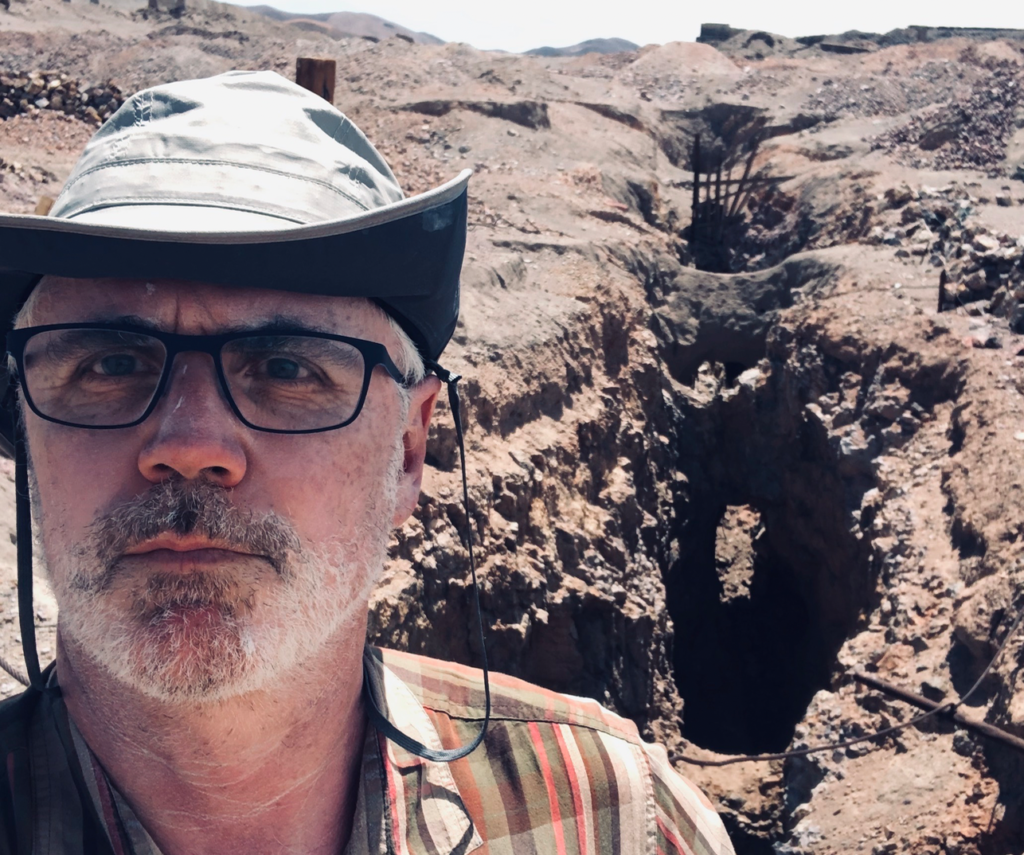
But I’ve also licked rocks. Regularly. Rocks, minerals, drill core… I’ve tongued them all. Why would you want to do that, I hear you non-rockhounds ask? Don’t geologists get laughed at enough without inviting yet more abuse for their oral quirks? A good question, and one that briefly attracted some mainstream commentary a couple of years back, if you consider the Nerdist mainstream.
Animals Do It.
Lots of animals lick rocks, which isn’t to say geologists are like animals, it just means that we’re not alone. It’s a perfectly natural thing to do. Cows, deer, butterflies and a host of other critters will gather to lick natural outcrops of salt or mineral-rich muds to top up with essential minerals like calcium.
There’s even a new scientific name for such places. A 2017 paper published in the august journal, Biogeosciences, suggested the ancient Russian word “kudur” for “a natural landscape complex featuring outcrops of mineral soils, which are systematically consumed by animals.” Try miming kudur in your next game of family charades and see how grandma reacts when you’re on all fours tonguing the carpet.
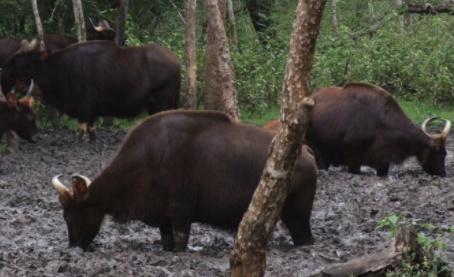
It’s A Compulsion
Some people can’t help eating foreign objects. They suffer from pica, the compulsive eating disorder that makes people ingest non-food items such as nails, rubber gloves, small boats and garden furniture. The Wikipedia entry on pica notes without a trace of irony that “Complications may occur due to the substance consumed.” It also told me that pica is most prevalent in Africa, perhaps because of higher levels of anemia and lower levels of education in some regions.
One form of pica, known as geophagia and the subject of many an old wive’s tale, can occur in pregnant women who have been known to eat chalk or soil, perhaps to satisfy a calcium deficiency.
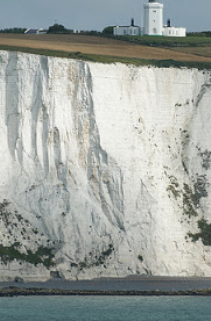
Taste Me
Geologists, however, do it rationally and deliberately with no obvious signs of compulsion or mental health issues. It’s true, we generally don’t eat the minerals we taste, but we will lick them. Why? Well if we can’t tell what a mineral is from its weight, colour, texture or one of the other standard criteria, then we may have to resort to litho-lingus; the good old-fashioned taste test.
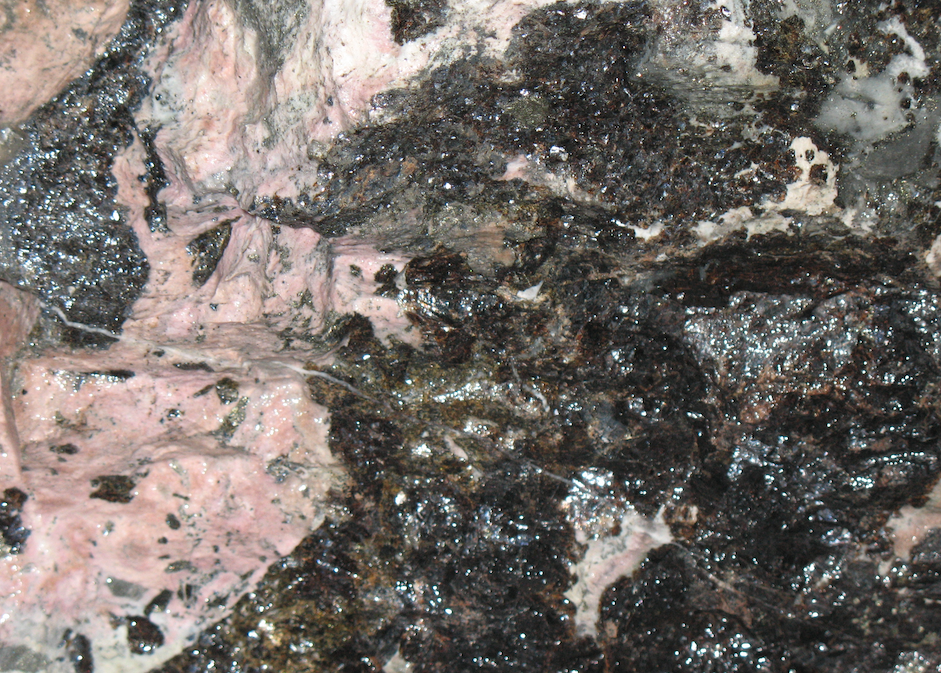
It’s such a common thing for industry geologists to do, that a pejorative that’s regularly hurled at our unfortunate profession -uttered with complete contempt by drillers, engineers and other less evolved types- is “rock licker”. Slightly better than nose comber or bearded wanker, I suppose, both of which I’ve been called in the not-so-distant past (last week).
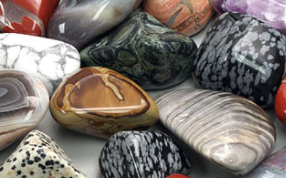
Gemologists and amateur lapidary types, people who love to polish rocks in tumblers, also lick pebbles to see how they’d look if polished. If you happen to catch someone doing this on the beach in the post COVID-lockdown world, that’s probably why, so go easy on them. At least they had a hobby other than wine drinking during self isolation.
My Tongue Is A Complex Organ
The tongue is a complex organ. It’s covered in bumps called papillae which are themselves covered in taste buds. The buds allow humans to taste 5 key flavours: sweet, sour, bitter, salty and marmite umami. Combine those 5 in different proportions and we can distinguish many thousands of diverse flavours with it, ergo, geologists like to lick rocks.
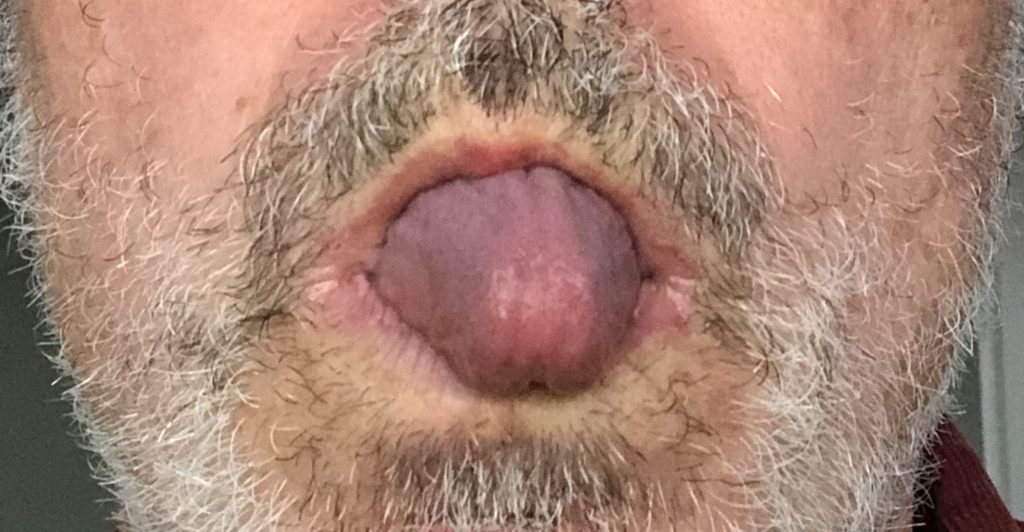
Some minerals have such a distinctive flavour they can be spotted instantly. Halite -rock salt (NaCl)- is the obvious one because everyone knows what salt tastes like. Its first cousin, sylvite (KCl) is another – it tastes salty but also sour/bitter, not something you’d want on your curry and fries after the Friday night crawl. I had a couple of trips down a potash mine on the northeast coast of England years back. The access tunnels were cut through rock salt and sylvite and you could taste both minerals in the underground air, which had a slightly sour, not unpleasant tang.
Other minerals taste vile, and copper minerals are a case in point. Sour, bitter, or really acrid and metallic. Chalcanthite is one. A hydrated copper sulphate, with a sweet metallic taste, it’s quite poisonous and not one for the mineralogy lab class unless you feel like reducing student numbers.
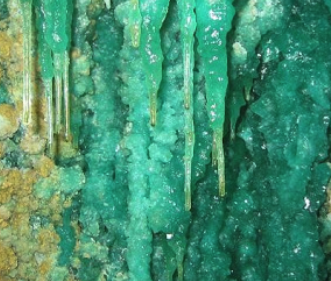
Melanterite is another goody to stick in the mouth. It forms gorgeous turquoise blue crusts that can grow in old mines as an oxidation product of iron rich minerals, but it tastes repulsively metallic and sweet.
Bright Colour = Slow Painful Death
Pay close attention if an experienced geologist (like me) tells you not to lick something, especially if it’s bright yellow, bright red or lurid green in colour -think Borat mankini green. You’d best listen before your jaw rots, your hair falls out and the stressed-out men in hazmat suits have to remove your blistered remains in a lead lined coffin. Green can mean uranium, or if you’re slightly luckier, lead. There’s a reason why geologists working for uranium miners and explorers don’t lick samples.

Bright red minerals could well be mercury-bearing (cinnabar), bringing with them all sorts of other fun side effects like muscle atrophy, violent emotional swings and nerve damage. Best avoided then.
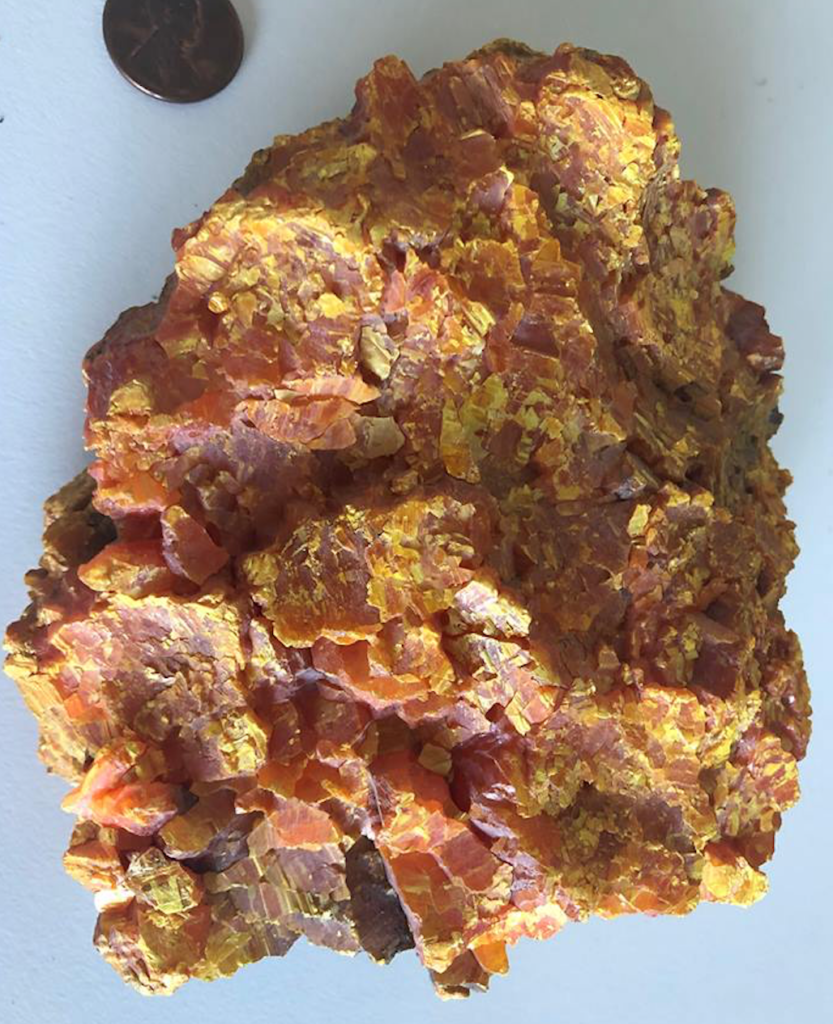
Yellow or pistachio green often indicates arsenic in the form of one of its many compounds such as its oxide (scorodite), or one of its sulphides (orpiment). In case you’re tempted to try licking these, I feel I should let you know that arsenic poisoning kicks off with discoloured finger nails and then moves through a number of alluring phases including the raging shits, vomiting blood, peeing blood, hair loss (phew, that sounds mild) convulsions, skin lesions, cancer, more convulsions, lung, kidney and liver damage and finally the blessed relief of a painful death. You have been warned.
Spittle Helps You See
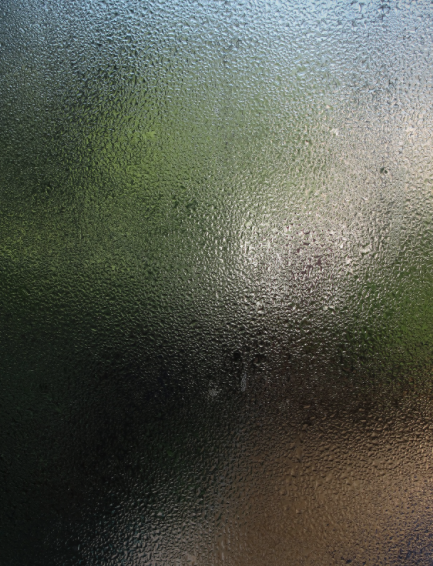
There are other perfectly rational reasons to lick rocks, which I touched on earlier when I brought up the lapidary nerds. A newly wet rock surface is cleaner, making the minerals within it easier to see. A bit like wiping a wet cloth over a steamed-up shower door lets you see how many people are in the cubicle you’re about to enter, assuming you’re all consenting adults.
A good application of bubbly spittle followed by a quick once over with a hand lens and I defy any rock or mineral to stay anonymous in the hands of an experienced licker. It’s the same thing with drill core when the geologist sprays water over it to make the textures easier to see and log.
Get There First
The golden rule when it comes to licking samples, is be at the front of the bloody line. When there’s only one decent sample, and the person who found it likes to lick, you DO NOT want to be last to take a look. I used to dread prospecting with my good friend Stuart. A typical day in the field with him wasn’t complete without a hand lens and buckets of saliva.
At key outcrops, I’d be handed a rock coated in warm drool. And then he’d invite me to have a closer look at the tiny black cubes that used to be pyrite, now glinting seductively at me through a moist coating of perfect round bubbles. Ahhh… science.
True Grit & Dead Cows
Soil geologists (poor souls) have also been known to lick -or rather chew- soil to identify its textural characteristics. Experienced geologists can use this to tell the difference between rocks or soil with a high silt content perhaps, versus fine sand. Clay minerals like kaolinite also stick to the tongue, so many exploration geologists will routinely test for it in altered rocks with just the slightest touch of the tip of the tongue.
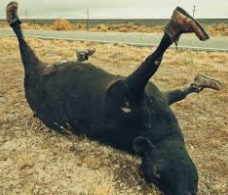
You need to remember to watch what lies beneath the soil you’re tasting. One unfortunate student I was told about by a twitter friend, unwittingly took a nibble on a sample of soil collected above a burial pit full of decaying cows. They’d been euthanized during the mad cow epidemic -which at the time was supposed to be what COVID19 is now- and were festering away nicely. The class minibus must’ve been a fun place on the way home; our hero with a dribble of dead-cow-prion-juice on their chin, but hey, at least they had the back seat all to themselves.
It’s Hard
And finally, it’s also important to bear in mind that your teeth are made of apatite (calcium phosphate) which has a hardness of 4 on Moh’s scale, the deeply scientific 10-point scale we use to determine relative hardness.
How does this help identify minerals? Well, most minerals are harder than 4 on Moh’s scale. If you try to scratch them with a tooth, usually it’ll work the other way around. You’ll find out pretty quickly that your mineral is harder than 4, but in the end your dentist will be the main beneficiary and speaking in public will be out for a while.
And that’s why we lick rocks.
Don’t Forget
I don’t really want to lick rocks. I’d rather be drinking fine red wines or artisan-made, small batch gins flavoured highly scented botanicals picked at midnight by blind monks on the south slopes of lush orange groves in Portugal or Turkey. It’s up to you. If you subscribe to urbancrows.com via the delicious subscription box at the top of the page, and if I can grab another dozen subscribers in the next week or two, I’ll socially unisolate for a moment and go and buy myself a bottle of something far tastier than rock salt. If you don’t, I’m back to rock licking and a few serious counselling sessions.


Excellent . John Peel would be proud of your very accurate descriptions
thanks mate
I am sure you put the error in purposely, but I’ll bite
Image result for hardness of apatite
Apatite is best known for its use as an index mineral with a hardness of 5 in the Mohs Hardness Scale. It is usually green in color, but can be yellow, brown, blue, purple, pink, or colorless. These colors are often so vivid that apatite has frequently been cut as a gemstone. Apatite is a brittle material.
Oops. Got me. My bad. Fluorite is 4. Should’ve recited my mnemonic before writing that paragraph. I do actually know better. Sigh.
Interesting as always!
Love the shot of St Margaret’s lighthouse. Should have had a taste of the cliffs while I lived there.